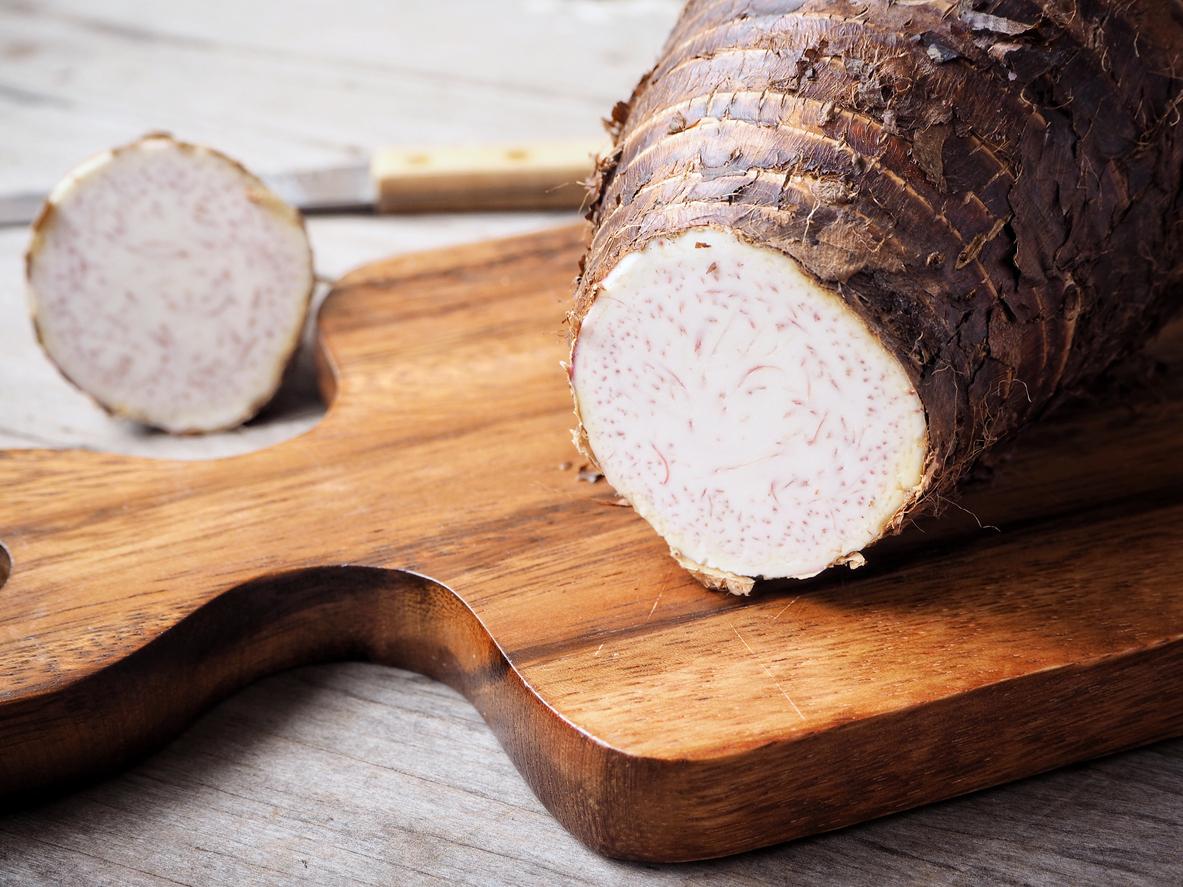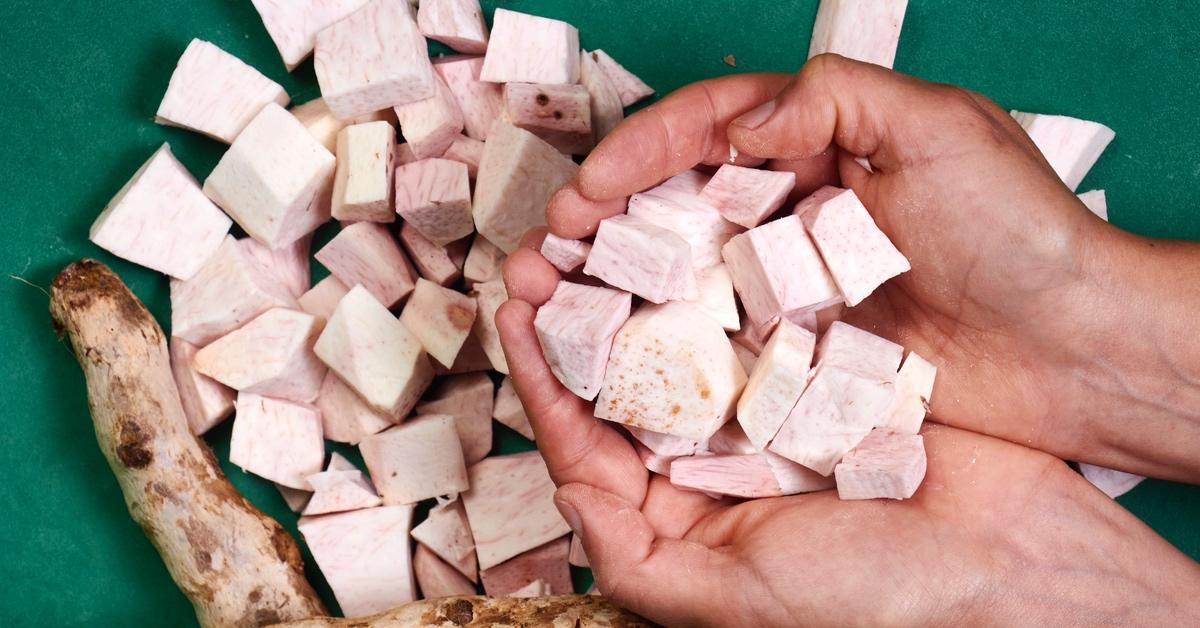Taro, Like Ube, Is a Popular Veggie Similar to Sweet Potatoes — but What Does It Taste Like?
Taro is a root vegetable without the vibrant purple inside commonly seen in its family member, ube.
Published March 12 2024, 4:08 p.m. ET

Nobody, it seems, can agree about one of the world's oldest cultivated plants — taro — let alone how it tastes.
The root vegetable cousin of the potato, taro is a staple of Asian cuisine but is referred to by dozens of different names around the world.
Its taste profile is up for debate, and how it is commonly referred to in the U.S. (i.e., taro root) is a bit deceptive, as the root of the plant isn't actually the part that's consumed. Join us on a worldwide exploration all about taro, what to make of its mysterious flavor, and how to incorporate it into your next meal.

What does taro taste like?
Described by Allrecipes as nutty with a hint of vanilla, the subtlety of the sweetness contrasted with the overwhelming nuttiness may come as a surprise. Unfortunately, the taro milk tea from your favorite boba spot is likely artificially flavored with heavy amounts of synthetic vanilla flavoring.
Per Allrecipes, taro does not have the trademark custardy flavor and texture of ube, although both can be utilized in sweet dishes depending on the recipe. Additionally, taro can be roasted, steamed, or fried and included as a side dish or as a filling inside of something else, and it can just as well be incorporated into baked dishes like cakes.
Taro contains a great deal of fiber and Vitamins E and B6, and its nutritional profile supports many dishes. It is a staple in many Asian homes. In fact, according to Food52, taro has been cultivated in Southeast Asia for thousands of years, even before rice.
While there are over 100 varieties of taro, the U.S. features just two types, per Food52, neither of which is likely to be specified beyond the taro label.

According to National Geographic, taro leaves and roots are poisonous when eaten raw because they contain calcium oxalate. The outlet even notes that some raw taro produces a slime that can cause rashes, typically when being peeled. However, cooking a taro eliminates the toxic elements.
According to one Reddit post, some have described taro as having a "mild cookies n' cream" flavor. In contrast, others have likened it to "buttered popcorn jellybeans" while noting the extremely sugary taste. These sweet descriptions certainly make sense, given the excessive amounts of sugar added to taro in places like boba cafes to match the custardy sweetness of ube.
What does taro milk tea taste like?
From personal experience, taro milk tea from boba cafes is so sweet and artificial-tasting that you can feel your head spin, whereas homemade tea with real taro root, like in the video above from YouTuber Thank You Berry Much, really draws out the nutty flavor and is much more palatable.
What does taro boba taste like?
Per recipes from China Sichuan Food, authentic Taiwanese taro balls are an excellent and creative addition to various dishes. Freshly made taro milk tea will feature a bright purple hue with a dominant vanilla flavor. In contrast, boba made from taro paste will have a nuttier and earthier taste to balance the milk base's sweetness.